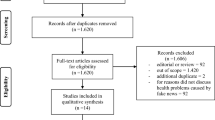Abstract
The way that bad news is disclosed to a cancer patient has a crucial impact on physician-patient cooperation and trust. Consensus-based guidelines provide widely accepted tools for disclosing unfavorable information. In oncology, the most popular one is called the SPIKES protocol. A 17-question survey was administered to a group of 226 patients with cancer (mean age 59.6 years) in order to determine a level of SPIKES implementation during first cancer disclosure. In our assessment, the patients felt that the highest compliance with the SPIKES protocol was with Setting up (70.6%), Knowledge (72.8%), and Emotions (75.3%). The lowest was with the Perception (27.7%), Invitation (30.4%), and Strategy & Summary (56.9%) parts. There could be improvement with each aspect of the protocol, but especially in Perception, Invitation, and Strategy & Summary. The latter is really important and must be done better. Older patients felt the doctors’ language was more comprehensible (r = 0.17; p = 0.011). Patients’ satisfaction of their knowledge about the disease and follow-up, regarded as an endpoint, was insufficient. Privacy was important in improving results (p < 0.01). In practice, the SPIKES protocol is implemented in a satisfactory standard, but it can be improved in each area, especially in Perception, Invitation, and Summary. It is suggested that more training should be done in undergraduate and graduate medical education and the effectiveness of the disclosure continue to be evaluated and improved.


Similar content being viewed by others
References
Fallowfield L, Jenkins V (2004) Communicating sad, bad, and difficult news in medicine. Lancet 363(9405):312–319. https://doi.org/10.1016/S0140-6736(03)15392-5
Espinosa E, González Barón M, Zamora P, Ordóñez A, Arranz P (1996) Doctors also suffer when giving bad news to cancer patients. Support Care Cancer 4(1):61–63. https://doi.org/10.1007/BF01769878
Baile WF, Buckman R, Lenzi R, Glober G, Beale EA, Kudelka AP (2000) SPIKES—a six-step protocol for delivering bad news: application to the patient with cancer. Oncologist 5(4):302–311. https://doi.org/10.1634/theoncologist.5-4-302
Crowther ER (1993) How to break bad news: a guide fror health care professionals. J Can Chiropr Assoc 37:121–122
Buckman R (1984) Breaking bad news: why is it still so difficult? Br Med J 288(6430):1597–1599. https://doi.org/10.1136/bmj.288.6430.1597
Girgis A, Sanson-Fisher RW (1995) Breaking bad news: consensus guidelines for medical practitioners. J Clin Oncol 13(9):2449–2456. https://doi.org/10.1200/JCO.1995.13.9.2449
Narayanan V, Bista B, Koshy C (2010) BREAKS protocol for breaking bad news. Ind J Palliat Care 16(2):61–65. https://doi.org/10.4103/0973-1075.68401
Fujimori M, Shirai Y, Asai M, Kubota K, Katsumata N, Uchitomi Y (2014) Effect of communication skills training program for oncologists based on patient preferences for communication when receiving bad news: a randomized controlled trial. J Clin Oncol 32(20):2166–2172. https://doi.org/10.1200/JCO.2013.51.2756
Gorniewicz J, Floyd M, Krishnan K, Bishop TW, Tudiver F, Lang F (2017) Breaking bad news to patients with cancer: a randomized control trial of a brief communication skills training module incorporating the stories and preferences of actual patients. Patient Educ Couns 100(4):655–666. https://doi.org/10.1016/j.pec.2016.11.008
Schofield PE, Beeney LJ, Thompson JF, Butow PN, Tattersall MHN, Dunn SM (2001) Hearing the bad news of a cancer diagnosis: the Australian melanoma patient’s perspective. Ann Oncol 12(3):365–371. https://doi.org/10.1023/A:1011100524076
Butow PN, Kazemi JN, Beeney LJ, Griffin AM, Dunn SM, Tattersall MHN (1996) When the diagnosis is cancer: patient communication experiences and preferences. Cancer 77(12):2630–2637. https://doi.org/10.1002/cncr.30694
Seifart C, Hofmann M, Bär T, Riera Knorrenschild J, Seifart U, Rief W (2014) Breaking bad news-what patients want and what they get: evaluating the SPIKES protocol in Germany. Ann Oncol 25(3):707–711. https://doi.org/10.1093/annonc/mdt582
Zwingmann J, Baile WF, Schmier JW, Bernhard J, Keller M (2017) Effects of patient-centered communication on anxiety, negative affect, and trust in the physician in delivering a cancer diagnosis: a randomized, experimental study. Cancer 123(16):3167–3175. https://doi.org/10.1002/cncr.30694
Mast MS, Kindlimann A, Langewitz W (2005) Recipients’ perspective on breaking bad news: how you put it really makes a difference. Patient Educ Couns 58(3):244–251. https://doi.org/10.1016/j.pec.2005.05.005
Liénard A, Merckaert I, Libert Y, Bragard I, Delvaux N, Etienne AM, Marchal S, Meunier J, Reynaert C, Slachmuylder JL, Razavi D (2010) Is it possible to improve residents breaking bad news skills? A randomised study assessing the efficacy of a communication skills training program. Br J Cancer 103(2):171–177. https://doi.org/10.1038/sj.bjc.6605749
Berney A, Carrard V, Schmid Mast M, Bonvin R, Stiefel F, Bourquin C (2017) Individual training at the undergraduate level to promote competence in breaking bad news in oncology. Psycho-Oncology 26(12):2232–2237. https://doi.org/10.1002/pon.4452
Brown VA, Parker PA, Furber L et al (2011) Patient preferences for the delivery of bad news - the experience of a UK cancer centre. Eur J Cancer Care 20(1):56–61. https://doi.org/10.1111/j.1365-2354.2009.01156.x
Richter D, Ernst J, Lehmann C, Koch U, Mehnert A, Friedrich M (2015) Communication preferences in young, middle-aged, and elderly cancer patients. Oncol Res Treat 38(11):590–595. https://doi.org/10.1159/000441312
Bousquet G, Orri M, Winterman S, Brugière C, Verneuil L, Revah-Levy A (2015) Breaking bad news in oncology: a metasynthesis. J Clin Oncol 33(22):2437–2443. https://doi.org/10.1200/JCO.2014.59.6759
Fujimori M, Uchitomi Y (2009) Preferences of cancer patients regarding communication of bad news: a systematic literature review. Jpn J Clin Oncol 39(4):201–216. https://doi.org/10.1093/jjco/hyn159
Author information
Authors and Affiliations
Corresponding author
Appendix
Appendix

Rights and permissions
About this article
Cite this article
Marschollek, P., Bąkowska, K., Bąkowski, W. et al. Oncologists and Breaking Bad News—From the Informed Patients’ Point of View. The Evaluation of the SPIKES Protocol Implementation. J Canc Educ 34, 375–380 (2019). https://doi.org/10.1007/s13187-017-1315-3
Published:
Issue Date:
DOI: https://doi.org/10.1007/s13187-017-1315-3




